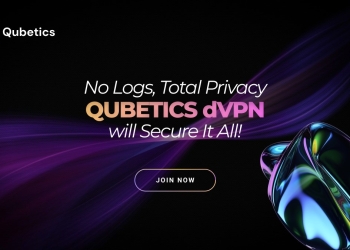As Solana grows in reputation away from a network for meme coins, large financial institutions are beginning to eye it as a potential platform on which to build out institutional-grade products. Although it is newer than Ethereum, currently, Solana is the best competitor in transaction throughput and lower fees, making it appealing to organizations looking to scale out applications.
The Growing Demand from Financial Institutions
In general, Ethereum has managed to be ahead of other blockchains by several counts for many years when it comes to the level of interest of financial products and services. For example, BlackRock used Ethereum’s blockchain for its tokenized fund, BUIDL.
However, SOL is starting to gain traction as some well-known companies look beyond the perception that it’s a little more than a hotbed of meme coins. “On the institutional side, it’s so early,” says Hadley Stern, chief commercial officer at Solana-based Marinade Finance, while speaking with news sources on the institutional adoption on both networks.
With the infrastructure in place for Solana, Stern thinks he is seeing strong interest from asset managers and high net worth individuals looking to utilize Solana for staking solutions.
Competing Advantages: Solana Versus Ethereum
To institutional developers, Ethereum’s broad ecosystem, DeFi origin, and dominance in stablecoins create a natural affinity to this blockchain. However, high transaction fees, among other scalability issues of Ethereum, place limitations on applications that require high frequency, such as trading and payments. SOL’s blockchain avoids these issues due to its simpler and more stable scalability model.

Although Ethereum’s Layer 2 solutions are not very likely to meet scalability demands, according to Leah Wald, CEO at Sol Strategies, the model of Solana is ready to meet such demand with inexpensive transactions and support without the need to outsource to sister chains.
It would, in that respect, be a game-changer for financial platforms across the board, which are racing toward real-time and, more importantly, efficiency in processing.
Innovation Mindset on the Solana Network
What’s really separate about Solana, though, is the builder mindset: the developers building on the network are big into crafting products with users in mind. First and foremost, they bill it as a scalable blockchain. SOL also managed to attract a bevvy of brilliant innovators; one such is Zeta Markets founder Tristan Frizza, who adds that his platform will make trading experiences on Solana about as seamless as those using Robinhood.
Taking into consideration the positioning of institutions with regard to options on blockchain networks, commitment to innovation, and most importantly, usability by the team, it places SOL perhaps as one of the most compelling options.

The seriousness taken by its developers in their work for the improvement of meeting users’ needs and at the same time fixing the many pending technical issues barely goes by unnoticed. In fact, creating a home of scalable financial products is virtually placing the blockchain for such.
Conclusion: Solana’s Path to Broader Institutional Adoption
While Ethereum remains the default go-to for institutions, the unique differentiators of Solana have drawn in more progressive financial players. Just as major institutional participation along with a rich network of active builders have joined force, Solana has managed to carve its niche in high-throughput applications. Moreover, by the look of its infrastructure advantage, to a number of financial giants, SOL does look capable of supporting even mainstream financial services.
Turkishnyradio is available around the clock, providing you with updated information about the state of the crypto world.









